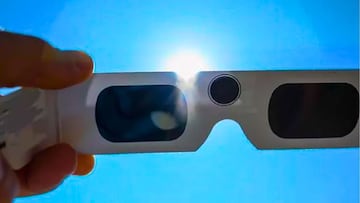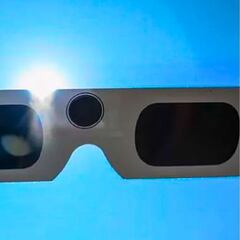Do you need special glasses to watch the ‘Ring of Fire’ Annular Solar Eclipse?
Looking towards the sun can be a dangerous exercise without the right protection.


The ‘Ring of Fire’ annular solar eclipse is set to grace the skies as the Moon moves between the Earth and the Sun on Wednesday, 2 October. Its path will follow an arc from south of the Hawai’i Islands across the Pacific Ocean, past Easter Island and onto Chile and Argentina, finally ending over the Atlantic Ocean. All 49 continental States in the US will experience a partial eclipse.
However, it’s not all plain and simple. For those lucky folks who have the chance to watch the eclipse in front of their eyes, there are indeed various measures to be taken beforehand.
According to the official NASA website, “there is never a safe time to look at the Sun without using a filter” and “the Sun is never completely blocked by the Moon during an annular solar eclipse. Therefore, during an annular eclipse, it is never safe to look directly at the Sun without specialized eye protection designed for solar viewing. Viewing any part of the bright Sun through a camera lens, binoculars, or a telescope without a special-purpose solar filter secured over the front of the optics will instantly cause severe eye injury.
Can I wear normal sunglasses to look at an eclipse?
In a word: no. Sunglasses, even your very expensive ones, let in way too much light to make it safe to look at an eclipse, and serious eye damage can be done. Special purpose solar filter glasses are needed in order to safely lay your eyes on an eclipse, such as eclipse glasses or handheld solar viewers.
Any scratches, tears or marks in your solar filter can also be a sign that it’s time to change, so make sure to inspect your equipment before use. Remember to put on the filter before looking upwards and always move your gaze away before removing - never take off the solar filter before you have looked away, the drastic and rapid change in light will be seriously damaging.

Related stories
Normal glasses that you use for everyday use, if that’s the case, can be worn underneath your eclipse glasses. However, no other optical devices should be used, such as telescopes, binoculars or cameras. There are indeed some devices that allow for closer inspection, but consulting with a qualified astronomer - NOT astrologer - is always the safest way to go about it.
Those living in the northeast of the USA will get a chance to see a partial solar eclipse on 29 March, 2025. However, there will be a wait of four years for the next opportunity, in 2029, but there will be two. One is set for January and will be visible over much of North America with the other in June for those closer towards the Artic region.


Complete your personal details to comment